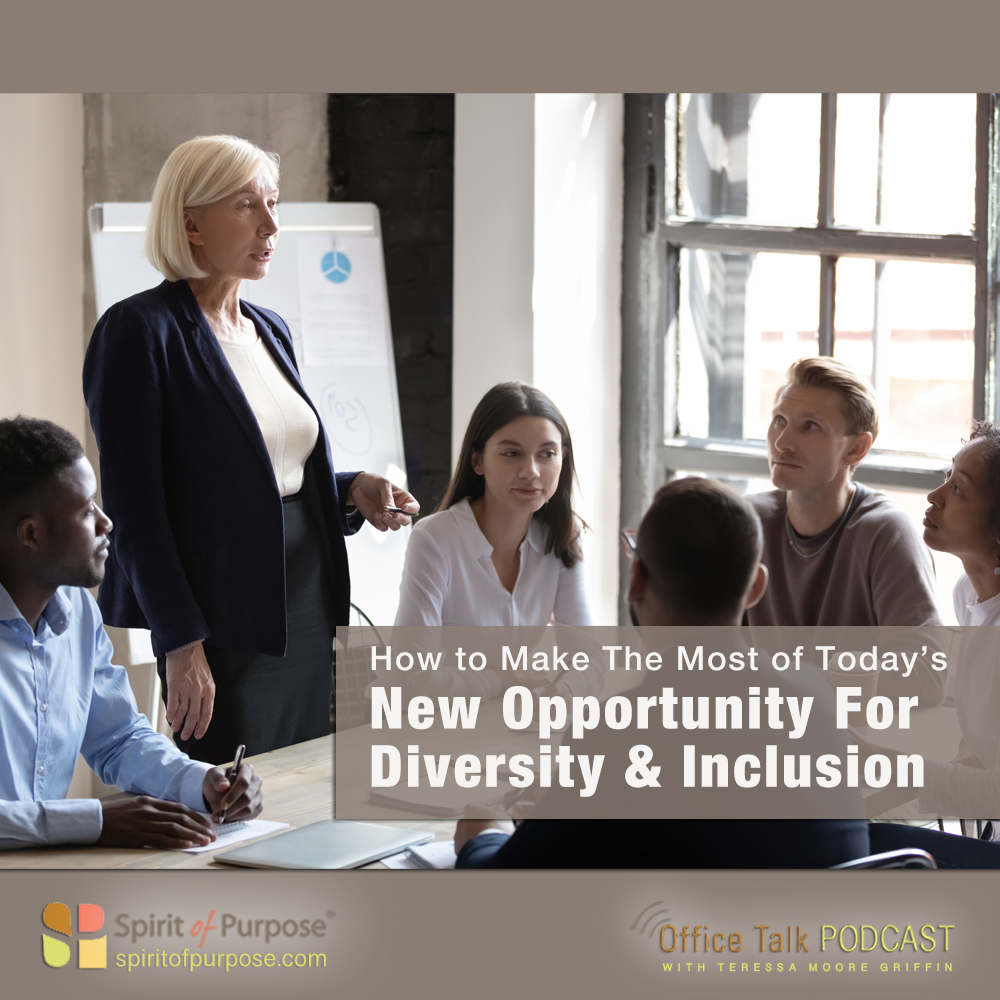PODCAST: A New Opportunity to Get Diversity & Inclusion Right
Many people in our country have been hurt and are hurting for way, way too long. Yes, wounds are inflicted as people engage in the broader society. And we have to be honest and say, they’re also inflicted in the workplace…in your workplace. You, especially if you’re a leader, have the power to make significant, measurable strides towards a more just and fair world through your moment-to-moment decisions and actions. Here’s a perspective to consider. It’s offered with the intent to be helpful and spur constructive action.
Leaders, now is a good time to personally dig deep to better understand your position on diversity and inclusion – your conscious intentions, the reality of the world you’ve inherited or created, and the gap between the two.
Sonya Kaleel, an Inclusion and Equity practitioner and leadership coach, suggests that you ask yourself the following probing questions to better position yourself to drive change in the realm of diversity and inclusion.
- In our company, is diversity a box to be checked or is there a genuine commitment to challenging the status quo and actively seeking equality in the challenging areas of race and gender?
- Am I, and the influencers in our company, willing to invest long-term in systemic change?
- What does my personal and professional network look like?
- How diverse are the resources from which we recruit?
- Am I ready to have genuine conversations about diversity and inclusion or am I afraid of being told I’m wrong or of making a mistake?
- Does our company have safe, trusted spaces for people to openly dialogue about diversity?
Achieving diversity and inclusion is complex. It requires many, many steps – some of which will succeed, and some will fall short of your desired impact. Just as it is with any business strategy, you’ll need to constantly plan, act, assess and adjust. So, take it slowly, as long as you continue make genuine progress.
As you look to hire a more diverse array of talent, intentionally broaden the circle from which you recruit. Broaden it until the applicant pool you’re able to generate is representative of the range of diversity you plan to attract and retain.
As you assess your efforts and results achieved, be open to honest feedback; even feedback which is not exactly what you want to hear. If you receive input that triggers your defensiveness, try reframing comments that strike you as critical or unfair pushback as useful information that could prove constructive and valuable. See the information as developmental input, offering you an important opportunity to learn, grow and move closer to achieving your goals.
The more openness you demonstrate to others’ feedback, the more they will relax and help you by sharing authentically. Developing an open, honest culture, or a sub-culture within a broader culture, takes time as people learn to trust one another, and trust you, the leader. Achieving diversity and fostering inclusion are not prescriptive. There is no one playbook or set of best practices that work for everyone, in every situation. There is only earnest commitment, genuine desire to do the work, and a willingness to learn and make bold moves that you believe will create the quality of change that’s need.


